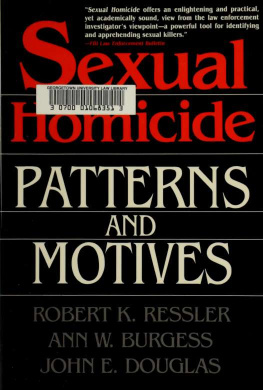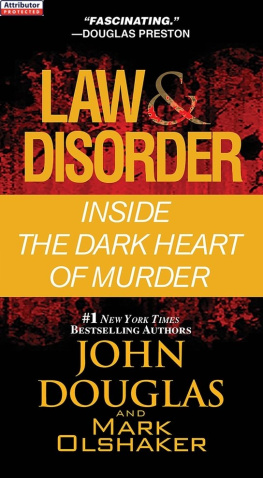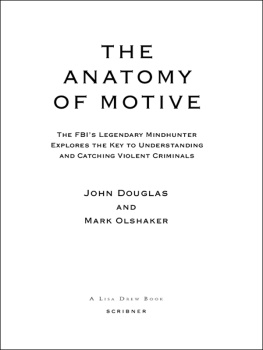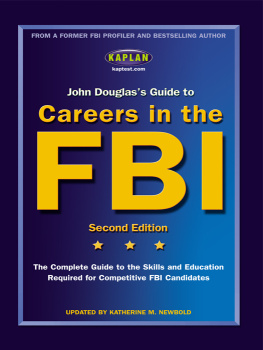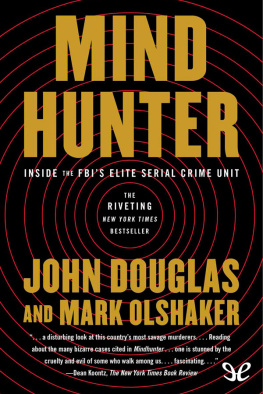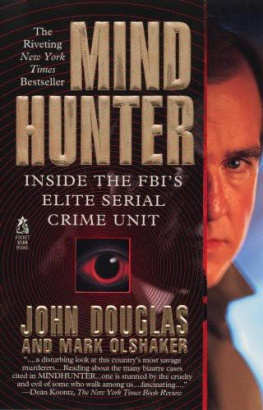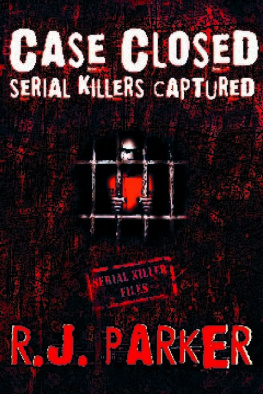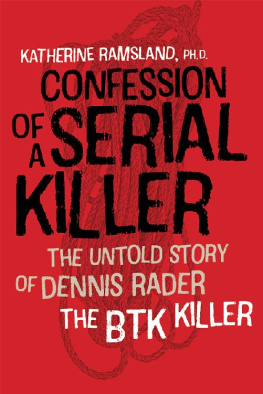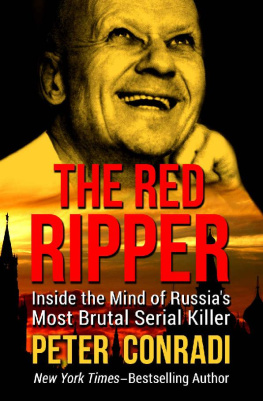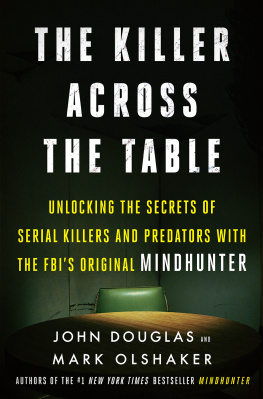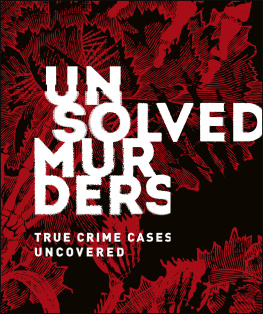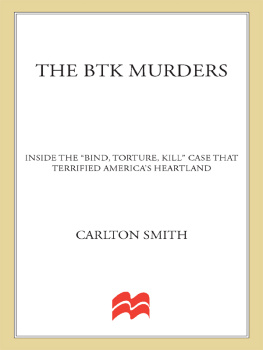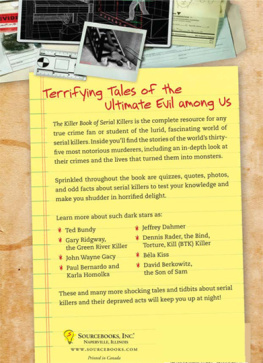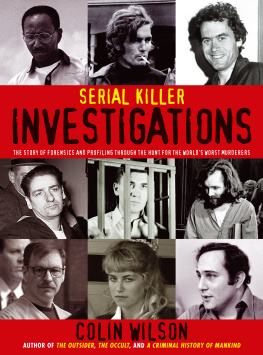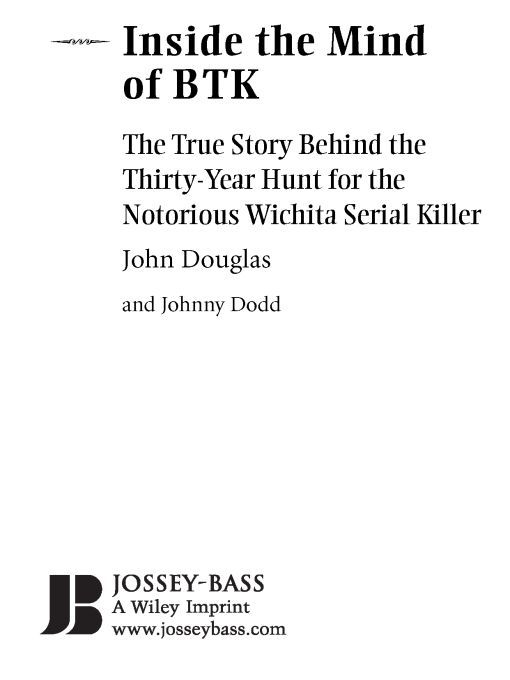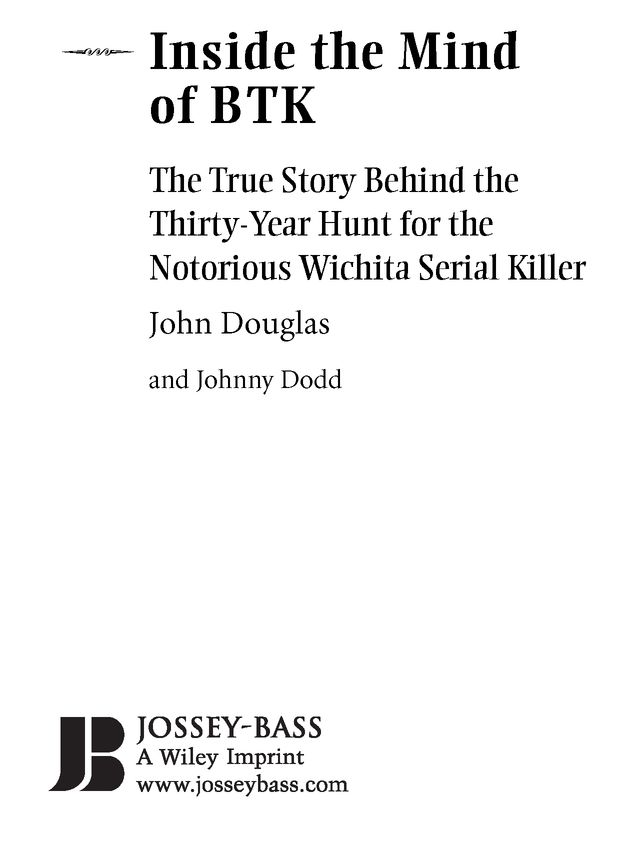Table of Contents
In memory of my mother, Dolores A. Douglas,
February 9, 1919-March 4, 2006.
Mother and my biggest fanwith love.
John Douglas
To my father, a man of few words, but many books.
Long may you read.
Johnny Dodd
Preface to the Paperback Edition
Criminal profiling has become a very popular and widely portrayed aspect of modern criminology in American society, particularly since it has been dramatized in movies like Silence of the Lambs and Mind-hunters; on such TV shows as X-Files, Profiler, Waking the Dead, and Criminal Minds; and books like Patricia Cornwells Kay Scarpetta series, featuring FBI agent Benson Wesley. I was an FBI agent back when profiling was still in its infancy, and Ive seen it grow to become a very effective investigative tool. But at the same time, Im well aware that for some critics, criminal profiling has become controversial; it has been widely misunderstood and even attacked in the media.
Recently, for example, Malcom Gladwell wrote an article in the New Yorker (Nov. 11, 2007) that questioned the legitimacy and success of criminal profiling, comparing it to astrology. Aside from including many mistakes, misrepresentations, and inaccuracies about the history of criminal profiling and its utility to the FBI, Gladwell and his fellow critics basically misunderstand the theory and practice of what I and other professionals having been doing for many years.
Most of what you read in crime novels or see in movies and on TV is pretty entertaining, exciting, and dramatic, but it has little to do with professional criminal profiling. What Ive been doing for more than thirty years is not so quick and easy to learn. Nor is it a magic bullet for achieving immediate solutions to all sorts of murders and other heinous deeds. It also has little to do with instant psychological analyses or mystic visions, trances, and talking corpses.
Im extremely proud of my work. As an FBI agent, I hunted for some of the most vicious predators in American history, including the Green River Killer, San Franciscos Trailside Killer, and the Atlanta child murderer. When I started, profiling was an exciting, emerging sciencewith a lot of skeptics and much work yet to be done. I learned as I went, conducting face-to-face interviews with Charles Manson, David Berkowitz, Richard Speck, and many other violent serial criminals whose single positive contribution to society was the window they gave me and my colleagues into the criminal mind. By talking with them and observing them, we learned how they thought, how they selected their victims, and how their violent acts escalated over time. We learned how to predict their behavior. And most important, we learned how these killers revealed themselves through their crimes.
Thats the basis of profiling. You study the evidencegathered from crime scenes and witness interviews, forensics and victimology. Then, from literally thousands of pieces of information, you find the behavioral indicators from which you put together a picture of the perpetrator.
Profiling went from theory to science during my years at the FBI training and investigative center at Quantico, Virginia, and my unit turned it into a tried-and-true tool, an essential part of complex investigations. Thats something Ill always take pride in. And although I retired from the Bureau more than ten years ago, my work as a profiler hasnt ended. Much of my time these days is spent doing pro bono work for victims of violent crime and their families, advising parole boards, and speaking to law enforcement groups about the value of criminal profiling in their work.
Im hoping that writers like Malcolm Gladwell can forget about the mythology they see in the movies and on TV and take a hard look at the facts. Im no Dick Tracy. Nor am I an entertainer shooting in the dark without expertise or evidence.
Like medical doctors, profilers require an inordinate amount of experience laced with instinct and intuition. Mr. Gladwell has written that instinct is the gift of experience. The first question you have to ask yourself is, on what basis am I making a judgment? So we agree on something. The more experience you have under your belt, the better your instincts and track record as a profiler will be.
So-called criminal profilers do much more than draw up vague pictures of an unidentified perpetrator. In fact, the FBI has no official position designated as profiler. More times than not, the profiler will offer a range of suggested investigative methods, including proactive techniques, information for probable cause in search warrants, interview and interrogation strategies to be used when the suspect is apprehended, and prosecutorial strategies. These profilers are also relied on often to provide expert testimony when a case goes to trial.
In the book you are about to read, for example, I detail how the Wichita police came to my unit at the FBI in 1979, seeking assistance in their investigation of a serial killer who had terrorized their city. What we did do was make a variety of suggestions, one of whichthe super-cop techniqueturned out to be a significant tool in getting BTK to drop his guard for the first time in three decades. This misstep on BTKs part eventually led to his arrest. The FBI felt so strongly against my divulging this successful super-cop technique in this book that it first sought to prevent its publication.
If the critics of profiling had themselves ever been involved in an actual criminal investigation, they would know that its a useful tool among many other scientific, investigative, and forensic tools used in modern detective work. Nevertheless, theres no absolute formula where A plus B automatically winds up with the C of certain identification, proof, and conviction.
As you read this book, youll come to understand that criminal profiling is a subtle yet powerful investigative art. I cant think of a better way to tell the story of criminal profiling than through the thirty-year investigation and hunt for BTK. Its an odyssey that reveals a great deal about the criminal mind and the latest investigative techniques used in finding out who he really was, how his mind worked, and how ultimately to lock him up forever.
JOHN DOUGLAS AUGUST 2008
Acknowledgments
I am indebted to the heroic people who shared their insights, professional experiences, and, in many cases, their lives with meparticularly the men and women of the Wichita Police Department and the Kansas Bureau of Investigation, who worked so long and so hard and so well to see this case through and see justice done. They have the undying gratitude of us all. Thank you.
This book was a team effort, and it would not have been possible without the support of our literary agent, Liza Dawson; our intrepid editor, Alan Rinzler; my entertainment attorney and good friend, Steve Mark; and of course Johnny Dodd, who became an extension of my life and personality in writing this book. Thank you all.
Finally, I would like to pay tribute to my mother, Dolores Douglas, who died in an accident while I was writing this book. She was my biggest fan and supporter, and I miss her dearly.
JOHN DOUGLAS
An extra special thanks to Liza Dawson, the best agent an ink-stained wretch could ask for. To John Douglas for his patience and trust in allowing me to tell his story. To Alan Rinzler and his editorial cat o nine tails (the scars have almost healed). To Kris Its So Over Casarona for literally everything. To Ken Landwehr, Larry Welch, and Bernie Drowatzky for all their help. And to all those who knew Dennis Rader (or thought they did) for agreeing to share their stories with me.


